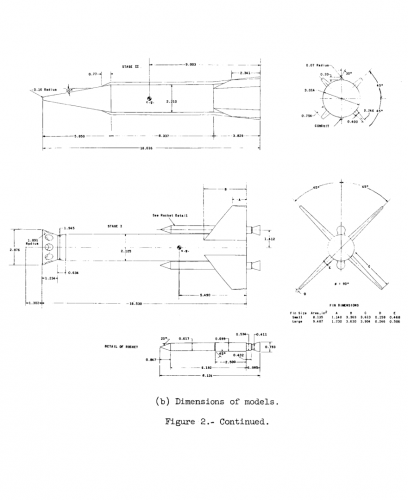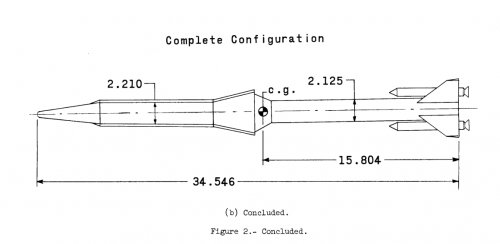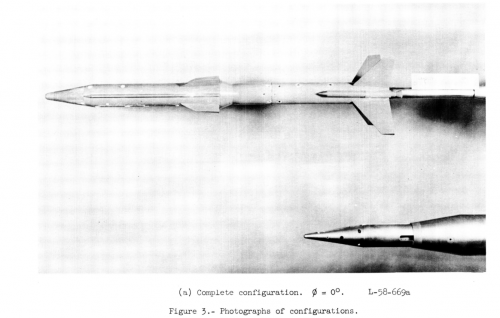- Joined
- 16 December 2010
- Messages
- 3,826
- Reaction score
- 4,249
I was looking through various wind-tunnel test reports on the NTRS and stumbled across a two-stage rocket configuration I am unfamiliar with.
The document provides little clue as to the size of the rocket save this:
http://ntrs.nasa.gov/archive/nasa/casi.ntrs.nasa.gov/19890068098_1989068098.pdf
The document provides little clue as to the size of the rocket save this:
The National Aeronautics and Space Administration has designed a high-energy liquid-fuel rocket engine and, for development purposes, a vehicle in which to house this engine. this vehicle is used as the second stage of a two-stage rocket configuration. The aerodynamic characteristics of each configuration must be obtained in order to determine whether any corrective measures are necessary to insure positive stability of each configuration throughout the Mach number range. The separation characteristics should also be obtained in order to determine whether auxiliary separation devices are necessary.
http://ntrs.nasa.gov/archive/nasa/casi.ntrs.nasa.gov/19890068098_1989068098.pdf



